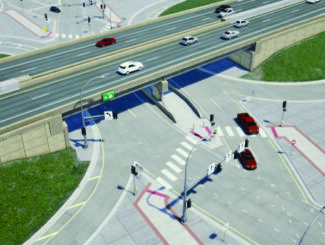January 15, 2024
By Amy Fredregill, Sr Director of Sustainability, WSB
Sustainability can be looked at as a three-legged stool, supported by environmental, economic, and social components. As the federal government provides resources for communities to drive sustainable solutions across the country, they are balancing those three pillars and building a more resilient future. The flow of federal dollars to community projects not only modernizes infrastructure and helps meet local needs, but it also can support priorities that address important issues like sustainability and climate change. The business case for sustainability could not have been stronger, by reducing cost and risk, meeting evolving needs of stakeholders, providing new services, staying competitive, growing workforce development opportunities and advancing public health and prosperity for all communities.
Looking to the future of infrastructure across the country, ensuring it is environmentally resilient, equitable and drives collaboration are three key priorities for federal policymakers. Partnerships are key to formulating solutions to some of society’s most complex challenges by advancing comprehensive, sustainable investments across systems such as water, energy, transportation, buildings and land use.
Passing Historic Federal Funding Packages
The Inflation Reduction Act (IRA) and the Infrastructure Investment and Jobs Act (IIJA) were signed into law in the past few years with the goal of delivering significant economic investment in infrastructure projects across the country by providing funding for sustainable solutions, while creating a more resilient and equitable future. These programs opened the door to help communities tackle systemic issues and include a diverse array of investments that will reshape our nation in the long-term. Here are just a few of the groundbreaking investments:
Infrastructure Investment and Jobs Act
- $55 billion for water and wastewater infrastructure including replacing lead pipes
- $1 billion to reconnect communities that have been divided by past infrastructure projects which primarily affected people of color
- $110 billion for roads and bridges
- $39 billion for public transportation
Inflation Reduction Act
- 40% of climate and energy spending benefitting disadvantaged communities
- $3 billion in environmental justice grants for community-based organizations
- $225 million for tribal climate resilience
- $3.2 billion in grants to support projects that improve walkability, safety and affordable transportation.
Fostering Regional Collaboration
This infusion of federal funding for sustainable solutions nurtures greater collaboration and partnerships to strengthen the ability respond to challenges. Regional collaboration means those dollars have a bigger impact on sustainability and long-term change. These partnerships break down the walls across systems and sectors to prevent silos and open the door for strategic community investments.
Championing Diversity, Equity, and Inclusion
Another way that the federal government is driving sustainability is through environmental justice, equity and inclusion. With increased funding for traditionally underserved communities comes a renewed focus by the federal government to provide investments for low-income and Black, Indigenous, and People of Color (BIPOC) communities that have faced systemic challenges. For instance, 40% of funding from the IRA law is dedicated to environmental justice communities, ensuring community infrastructure investments are not only more sustainable, but more equitable as well.
Combating Climate Change & Building a Sustainable Future
Climate change is a significant threat to the American people, national security, the economy and communities are exploring how to adapt, invest and ensure projects will foster a sustainable future for the long-term. The building projects being funded by IRA and IIJA have created a new opportunity to strengthen our nation’s climate resiliency.
In particular, a few examples include green infrastructure that mimics nature, biological wastewater treatment that uses less chemicals, renewable energy, and electrification. These investments support the needs of local communities while also creating durable investments. These projects provide more tools in the toolbox for resiliency across different systems.
How WSB Can Help
With the recent influx of federal funding for sustainable solutions, the opportunity for cities to obtain meaningful investments in sustainable, resilient infrastructure projects is better than ever. But where do cities start and how can they build towards this future? WSB is here to help. Our experienced team can help communities develop a strategy and pursue success. From securing grant funding, cultivating meaningful partnerships, developing multi-year plans, crafting policy and designing clean technology, we are helping communities across the country navigate the best path forward for sustainable futures that meet the needs of residents, businesses and their broader communities’ long-term goals.
Amy has nearly 25 years of experience across many industries, particularly energy and agriculture, in the public, private and nonprofit sectors. This experience has provided Amy with a broad background that enables her to meet community and business needs based on the business case for sustainability. By working across interesting systems to simultaneously advance environmental, economic and social goals, she is able to uncover creative solutions. Through her relationship-based approach, Amy meets the unique needs of communities and businesses by working with all areas of the firm to provide comprehensive solutions.


